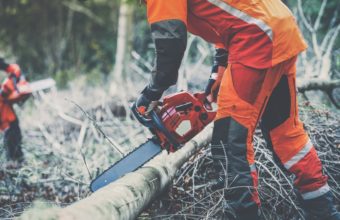Yes, you can shorten a tree through a pruning technique known as “crown reduction” or “height reduction pruning.” Crown reduction involves selectively removing branches or portions of branches to reduce the overall height or size of a tree while maintaining its natural form and structure.
This technique is used for various reasons, including…
- Safety – To address concerns about the tree’s proximity to buildings, power lines, or other structures, making it necessary to reduce its height to minimize risks.
- Aesthetics – To reshape the tree and improve its visual appeal by reducing its size or height.
- Health – To remove dead, diseased, or damaged branches, or to alleviate stress on the tree by reducing the weight of overgrown limbs.
Here’s how crown reduction pruning is performed…
- Assess the Tree – Determine the specific reasons for reducing the tree’s height and identify the branches that need to be pruned.
- Select the Right Season – Pruning is best done during the dormant season, in late winter to early spring or late fall, to minimize stress on the tree.
- Make Proper Cuts – Use the appropriate pruning tools, such as pruning shears, loppers, or a pruning saw, to make clean, precise cuts. When removing branches, cut back to a lateral branch or bud that is large enough to assume the terminal role.
- Limit the Amount of Reduction – Avoid removing more than 25% to 30% of the tree’s canopy in a single pruning session. Over-pruning can stress the tree and negatively impact its health.
- Monitor the Tree – Keep an eye on the tree’s response to the pruning. Ensure that wounds are healing properly and watch for signs of stress or disease.
- Regular Maintenance – Depending on the tree’s growth rate and the desired height, you may need to perform periodic pruning to maintain the tree’s reduced size.
Crown reduction pruning should be done carefully and selectively to maintain the tree’s structural integrity and vitality. Proper pruning techniques should be followed to prevent damage to the tree. If you’re unsure about how to perform crown reduction pruning or have concerns about the tree’s condition, consider consulting with a certified arborist or tree care professional. They can assess the tree’s health and provide expert guidance on the most appropriate approach to height reduction while ensuring the tree’s long-term well-being.






